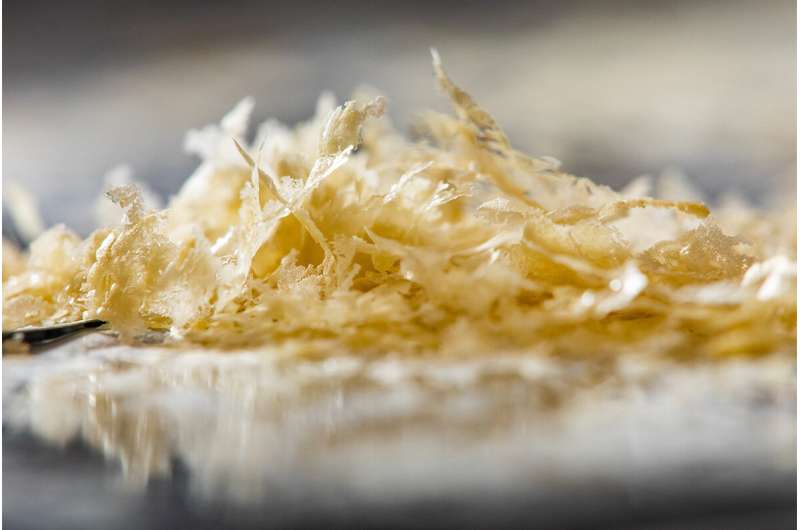Dehydrating plant proteins at the speed of sound

Almost everyone is familiar with ultrasound—the high-frequency sound waves that bounce around in the body creating echo patterns that allow expectant parents to view their babies in the womb or clinicians to capture images of tumors, cysts and internal structures.
As I pull on a white lab coat and don the hairnet and plastic goggles that are required for entering our lab in the Agricultural Engineering Sciences building, I think about how I'm preparing to use ultrasound waves in a new way. I will use them to dry a high-protein gel made from peas, lentils or almonds to create a dehydrated food product that can be used by the food and biotech industries.
More people are turning to plant-based proteins to promote health and lose weight, and high-protein foods such as energy bars and shakes are hugely popular. But the moisture in these ingredients can cause problems for food manufacturers.
Edible gels from plant proteins are widely used in the pharmaceutical industry also to make capsules for medications. However, these gels are troublesome, too. They tend to form films around the heat exchangers used to dry them. This reduces the heat transferred and drives up both the energy used and the cost of chemicals needed to clean the machines.
The most popular methods of processing these proteins are baking or freeze drying. Baking can destroy or diminish plant nutrients and damage the foods' structural integrity. Freeze drying is very time-consuming, taking up to a day and a half to complete.
For some time, the food industry has explored ultrasound drying methods, and in collaboration with U. of I. alumnus Ozan Khahraman, our lab has developed and refined a method for it. Ultrasound dehydration can remove water and solvents from the protein gels without significantly raising their temperature. It also is gentle enough to use on delicate food products.
In the lab, I mix almond, lentil and pea protein powders with water and let them sit for two hours. When I add ethanol to this mix, it forms a viscoelastic protein gel that, even when stressed, tends to maintain its shape.
I place the gel in a custom-designed ultrasound transducer box. This device converts electrical energy into sound energy. I make sure the gel is within a few millimeters of the energy source.
I submerge the box in a water jacket to hold the temperature constant at about 28º C (or 82.4º F).
The box vibrates at 40kHz—a significantly higher frequency than medical ultrasound. This dehydrates the protein gel as pockets of moisture that are expelled as a room-temperature mist.
In less than 10 minutes, the gel changes into a thin film that retains a fresh look and feel, is water soluble and easily digestible.
Our processing method has numerous advantages. First, it's efficient: We can extract the moisture from the protein source in minutes, rather than the 1-2 hours needed in baking or 36 hours required for freeze drying. As a result, energy consumption and processing costs are significantly lower.
Second, because ultrasound drying doesn't significantly increase the temperature of the protein, the nutrients in it are preserved.
Finally, the protein film doesn't come in contact with any hot surfaces, so we don't need to clean our heat source.
Our method for drying plant proteins has generated excitement among people in the biotech and food science industries. We presented our findings at the Center for Advanced Research in Drying, the American Oil Chemical Society and the Institute for Food Technologists.
Provided by University of Illinois at Urbana-Champaign





















